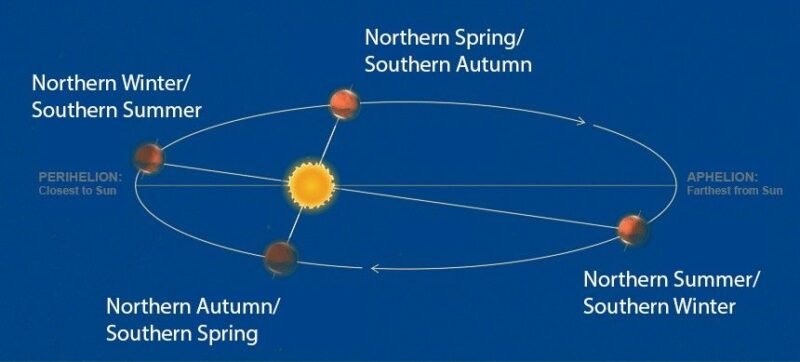Quick Takeaways
-
Mars: With a year lasting 687 Earth days and a thin atmosphere, Mars experiences long, cold seasons; recent temperatures reported a high of -18°F.
-
Saturn: Featuring a 27-degree axial tilt like Mars and Earth, Saturn’s seasons last an astonishing seven years due to its 29-year orbit; the last ring plane crossing was observed in March 2025.
-
Neptune: Each of Neptune’s seasons spans over 40 years. Observations from 1996 to 2002 using the Hubble Space Telescope revealed subtle atmospheric changes indicating seasonal shifts.
- Educational Opportunity: As Earth enters summer, resources like the Suntrack model on NASA’s Wavelength provide engaging ways to learn about the Sun’s path and planetary seasons.
June’s Night Sky Notes: Seasons of the Solar System
As we dive into June, many of us enjoy the warmth of summer. However, the Solar System offers unique seasonal experiences. Let’s explore how seasons vary across different planets.
First, Mars presents an intriguing case. Its axial tilt closely matches Earth’s, yet a year there spans 687 Earth days. This extended orbit results in a long autumn. Recently, temperatures at Gale Crater reached a brisk -18 degrees Fahrenheit, far from the comfortable summer days we cherish here.
Next, we venture to Saturn. While its tilt is similar to Mars’ and Earth’s, Saturn’s orbit lasts about 29 years. This means each season stretches over seven Earth years. Although we can’t feel a Saturnian season, we can witness its ring plane crossings from Earth. The last occurrence occurred in March 2025, offering a spectacular view as the rings appeared to vanish from sight.
Further out, Neptune showcases even more fascinating dynamics. Each season lasts over 40 Earth years. Though more gradual, seasonal changes affect its atmosphere. Observations between 1996 and 2002 using the Hubble Space Telescope revealed bright shifts, indicating seasonal effects in its southern hemisphere.
As we enjoy our summer, consider building a Suntrack model. This engaging project illustrates the Sun’s trajectory throughout the seasons. Resources like this are available on NASA’s Wavelength and Energy platform, highlighting the intersection of education and technology.
By examining the seasons of the Solar System, we expand our understanding of planetary science. These insights inspire technological advancements that improve our daily lives. As we stargaze, let’s remember the wonders of our celestial neighbors.
Continue Your Tech Journey
Stay informed on the revolutionary breakthroughs in Quantum Computing research.
Stay inspired by the vast knowledge available on Wikipedia.
SciV1

